- Home
- Fruit Plants for North India
- Miyazaki Mango (Grafted)
Miyazaki Mango (Grafted)






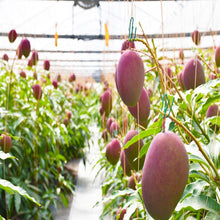
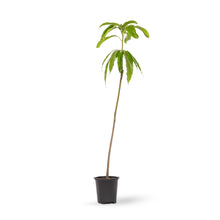
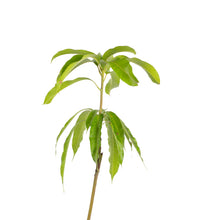
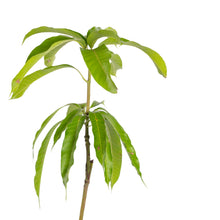
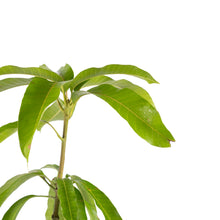
Miyazaki Mango (Grafted)

 Climate
Climate Time to Yield
Time to Yield Maximum Size
Maximum Size


Grafted for faster yield within 12-18 months

Damaged or lifeless? We’ll replace it for free. Learn more



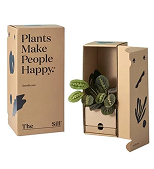
Double layered custom boxes to protect plants during shipping.
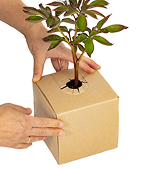
Air vents for proper air-flow

To preserve plant freshness during transit
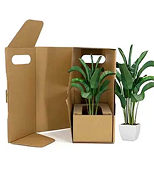
Details steps of how to grow and maintain your plant
Get the World's most expensive Mango, now available at Exotic Flora!
The Miyazaki Mango, a variety of "Irwin" mango, stands out from the common yellow "pelican mango" widely cultivated in Southeast Asia. Originating from Miyazaki city in Japan, these mangoes are renowned for their exceptional quality and unique characteristics. Each Miyazaki Mango weighs over 350 grams and boasts a 15% higher sugar content compared to other varieties. Last year, these mangoes were the most expensive in the world, selling at ₹2.70 lakh per kilogram in the international market, as reported by Japanese media. Rich in antioxidants, beta-carotene, and folic acid, these mangoes also help in preventing reduced vision.
Growing Tips:
- Miyazaki Mango plants thrive in well-drained soil with ample sunlight exposure.
- Provide regular watering to keep the soil consistently moist but not waterlogged.
- Prune the plant to remove dead or damaged branches, promote airflow, and maintain a desirable shape.
- Apply organic fertilizer high in nitrogen, phosphorus, and potassium during the growing season to promote healthy growth and fruit production.
- Protect young mango plants from frost and cold temperatures by covering them with blankets or using frost protection methods.
Specifications:
Inside the Box:
- Mango Fruit Plant: 1-3 Feet Height
- Growing Pot (Black color): 6 Inch
(Note: The above specifications are indicative; actual dimensions may slightly vary.)
Blooming Year:
- South India: Starts from November
- North India: Starts from February to March
- It takes 100-150 days from flower to fruit development.
Fruiting Time: Edible fruiting will start 1.5-2 years after purchase. Fruiting begins in March and is available up to mid-August.
Initial Care for 10-15 Days Just After Receiving Your Plant:
- Remove the packaging materials carefully.
- Press the soil in the pot and add additional soil (garden mix) if necessary.
- Maintain moisture in the pot, ensuring the soil is dry between watering to avoid overwatering, which can harm the plant.
- Provide support with a stick or moss stick for straight growth if needed.
- Ensure the plant gets enough direct bright light for 10-15 days and avoid immediate transplanting (minimum 1-2 months).
- Prune any damaged branches that may have occurred during transit.
Watch this video for more: https://www.youtube.com/watch?v=ZacRtEM0F0Q
Light & Temperature:
Ensure the plant receives 6 to 8 hours of direct sunlight each day for healthy growth and fruiting.
Watering:
Water the plant every 2 to 3 days, keeping the soil evenly moist but not waterlogged. Avoid letting it dry out completely.
Fertilizing:
Begin with a rich base of compost, loamy soil, and well-aged manure. In the early growth stage, use a nitrogen-rich fertilizer to encourage foliage. As the plant approaches flowering, switch to a fertilizer with a 2-1-3 NPK ratio and magnesium to support fruit development.
Support:
During the initial growth phase, insert a sturdy stick to help support the plant’s vertical growth. For creeping varieties, provide a trellis or horizontal support throughout their lifecycle.
Pruning & Thinning:
After harvesting, prune about 30% of the shoots to stimulate new fruiting wood and encourage a productive next cycle.
Pollination:
To ensure good pollination and fruit set, grow a mix of cultivars to promote cross-pollination. If you're growing indoors, hand-pollinate flowers using a soft brush. Outdoors, attract natural pollinators like bees by planting pollinator-friendly companion plants.
Pests & Disease:
Keep an eye out for common pests such as mealybugs and borers. Spray neem oil every 10 days as a natural preventive measure. To protect fruits from fly infestations, bag them as they ripen. After any rain, apply a spray containing copper and sulfur to prevent fungal diseases.
Soil Type & Mix:
For healthy growth and good drainage, use a mix of 50% red garden soil, 30% well-rotted compost, and 20% coarse sand or coco-peat. This combination ensures your plant gets essential nutrients while maintaining the right soil texture for root development.
Avoid:
Do not use heavy black clay by itself, as it retains too much water and can cause fruit drop due to waterlogging. Also avoid using pure sand, as it drains too quickly and doesn’t retain nutrients, which can lead to poor plant health.
Repotting & Planting Guide:
Choose pot size based on the plant’s root depth and spread. For containers, ensure proper drainage and use the recommended soil mix. If planting in the ground, dig a hole as wide and deep as a household bucket and fill it with the same soil mix to give roots a healthy start.
Recommended Pot Sizes:
Dwarf Citrus / Guava: 18–24 inch pot (40–60 L capacity)
Strawberries / Chillies: 12–14 inch pot (20 L capacity)
Selected plant of 8-10 inches
Planted into a 5-inch pot
With healthy, moisture-retaining soil
A care instruction sheet for maintenance guide

Get in touch for best pricing on bulk orders and landscaping projects.
 WhatsApp us
WhatsApp us

Call on 9177805454 (Mon-Sat, 9 AM-6 PM) or WhatsApp us – we’re here to help.
About Exotic Flora
At Exotic Flora, we’re passionate about bridging the gap in bringing plants to everyone. With over 500+ varieties across 7 plant categories, from exotic finds to everyday greens, we bring the entire range to you.
Our plants, sourced from all parts of India are nurtured at Kadiyam, in our 25 acres in-house nursery by a team of expert horticulturists. Once they are ready we ship all our plant varieties across India.
Our services go beyond safe delivery of plants. A dedicated support team is there to help you with any maintenance queries you may have.
At Exotic Flora we always believe in going that extra mile, because everyone should have the plants they love.
Every, fruit plants vary in their fruiting time, depends on location, climate & age of the plants. Generally, Grafted fruit plants starts fruiting within 2 years of planting, where as non-grafted plants take more than 2 years. You can check the fruiting time of each plant in the plant description.
No, Majority of fruit plants are not delivered with fruits. But some grafted fruit plants can be delivered with fruits and flowers mostly Citrus, Guava, Star fruit, Fig, Ber etc. But it is recommended to remove the flowers during early days, so that plants can get more branches and physical strength.
Grafting is a technique where two plants part are combined together so that they can grow together. Most commonly seen in Mango. Air Layering is also a vegetative propagation technique where a plant is produced while it is still attached to its parent's plants. Commonly seen in Guava. Stem cutting is a vegetative propagation technique, where soft, semi-hard, or hardwood stem is cut with 2-3 nodes and used for the multiplication of plants. Commonly seen in flowering & ornamental plants.
Yes, the grafted fruit trees produce fruit earlier, than the non-grafted fruit plants.
These are some of the rare and new fruit plants and it's varities, which are not avialable everywhere in our country.
Remove the plant from its pot. Make sure to not disturb the root ball. Place the plant in a prepared pit(1x1ft) or slightly bigger pot than the current pot. Firm the soil around the plant with your hands. Water well till it drains out from the drainage hole.
In order to maintain the good shape of the plants, proper care should be taken from the beginning like the pruning of unwanted and diseased parts of plants, stalking to young plants, regular maintenance of plants.
In General, a grafted/air layered/hybrid fruit takes 2 years for fruiting, whereas seeded grown plants take 4-5 years of time for fruiting. But it may vary depending on the plant types.
In general if your soil weell drained, fertile and organic in nature, it will produce good quality fruit. Sandy-loamy is the most preferable soil used for fruit plants.
Size and taste of each fruit plants varies depending on the varieties. You can find more details about each fruit plants in terms of size and taste in the description of individual plants.
Initial first 2 years are very important to feed the plants with organic manure and fertilizers regularly. It is recommended to add organic manure or compost to each plant in every 3 months of time intervals. Do not go for Chemical fertilizers it will weaken the plants in future.
Plastic pots with drainage holes preferably work best as they are lighter to move around. Any other container which is light in weight with a drainage hole can also work to grow fruit plants.
I was anticipating a larger plant, but what I received was a much smaller one that was recently grafted. However, I'm pleased that it arrived in good condition and wasn't damaged at all. I hope it thrives and grows soon!
Packing was very good and received the plant in good condition ,two leaves are damaged but plant is good. Taking good care care for the plant waiting for the new leaf .
Good work good 👍 thanks
I like your packaging and safety procedure. The tree I received was in nice condition but after two days it's few leaves fall off.
Adopted to changed environment.



